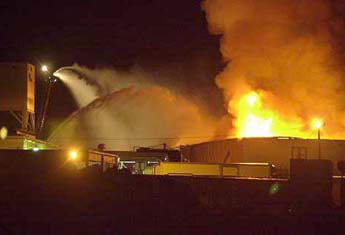When Will New York City’s Next Gas Leak Explosion Occur ? Analysis from NYC Burn Injury Lawyer

Every few months, media outlets report another fatal gas leak somewhere in America that winds up causing a business building or home to explode. Recently, a Firestone, Colorado house exploded killing two people. That event occurred after an abandoned gas pipeline leaked out into the soil – finally making its way to a homeowner’s basement.
New York City residents and workers face similar threats since our rapidly aging underground infrastructure is filled old gas pipes rotting away. If New York City’s Consolidated Edison (Con Edison) and National Grid (the two major gas providers for the city) don’t make accelerated progress in examining all their oldest gas mains for leaks and quickly replacing them – almost anything could happen.
A March 2014 East Harlem Explosion Killed Eight People
A highly informative and detailed New York Times article published on March 24, 2014 outlined our city’s vulnerability to dangerous gas leaks and explosions. At present, New York City has approximate 6,302 miles of pipe carrying natural gas beneath it. Since gas is normally odorless –making it harder for anyone to notice its presence, companies add the compound mercaptan (a substance that smells like rotten eggs) to help people smell it.
The March 2014 explosion involved gas supplied by Con Edison. At that time, the New York Times reports that Con Edison had one of the highest leak rates in America – due to the lengthy network of gas pipes it controlled (based on 2012 data).
Of course, Con Edison and National Grid, the other major distributor of natural gas to New York City customers, are arguably not completely at fault for these problems. Our city’s highly congested traffic patterns make it very difficult to dig deep and repair over 6,000 miles of pipeline. And some of the pipes are now well over 50 years old.
Several years ago, Con Edison told reporters that it might then cost perhaps $2,000 per foot (more than $10 million a mile) to replace a gas main. And that cost would likely have to be passed on to consumers – both residents and businesses. (Fortunately, other states like Ohio are now proving that there are efficient ways to quickly upgrade old and potentially hazardous gas pipelines).
Replacing the old metal pipes that tend to crack – creating leaks – appears to be the only way to greatly reduce future explosions in NYC and elsewhere around the country. The Times reports that normally, the cast-iron (wrought iron or poorly coated steel) pipes need to be replaced with pipes made of plastic — or others made of a coated steel that’s far less likely to break and leak gas.
Unfortunately, our city has a great many gas-related explosions that aren’t provided with major media coverage – in contrast to the March 2014 NYC one that leveled the two buildings. Here’s a look at few others that have plagued area residents.
Additional NYC Gas Leaks and Explosions That Received Little Coverage
- 2013 Bronx event. A married couple woke up in the night and thought they smelled gas. When the man went to check out the problem, he decided he couldn’t smell anything unusual. When he then lit a cigarette, a sudden flash of fire developed – leaving the man’s face badly burned;
- 2011 Queens incident. A young man in his 20s noticed smoke apparently rising from a basement utility room. Shortly thereafter, the utility room door exploded open. Following that incident, the gas investigators found that the leak had come from a steel gas main (54 years old) in the nearby street;
- 2008 Queens event. After Con Edison had restored gas service to a 43-year-old man’s building, he attempted to light his stove pilot. A serious explosion then occurred – killing the man of his injuries within weeks and badly burning his little girl. Another 15 people were also injured in that same incident.
After state workers investigate these types of explosions, they often conclude that the gas distributor in the area had simply failed to make enough routine checks for gas leaks.
New York and Other States Should Follow Ohio’s Proactive Approach to These Repairs
While states like Pennsylvania, and Maryland are predicting it will take them many, many decades to finally replace all their faulty natural gas pipelines, the state of Ohio has already decided to move forward quickly to repair their underground infrastructure. In that state, Duke Energy is working hard to replace all dangerous pipes during the next decade or so. Certain parts of Ohio now have the fewest gas leaks in the country.
Conclusions
Although New York City must conquer many unique problems while replacing its extensive underground gas pipeline infrastructure – at least it’s beginning to acknowledge all that must be done. Clearly, all NYC residents must remind our state and local politicians that these repairs must be completed as soon as possible. No one should force us to play a game of Russian roulette (as a Stanford energy professor has put it regarding the Boston and Washington D.C. gas leak problems) – always wondering which current gas leak may soon tear this city apart with one or more new explosions.



